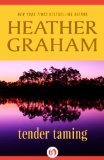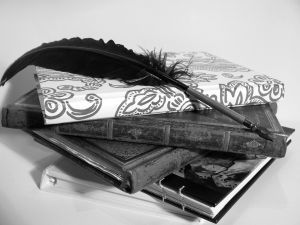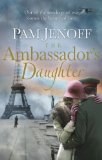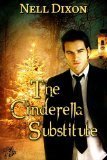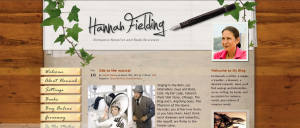Hannah Fielding's Blog, page 133
March 28, 2013
Book review: Tender Taming by Heather Graham
From the blurb:
Cultures clash when a determined PR director meets her match in the Everglades
Twenty-five-year-old Whitney Latham has worked hard to prove herself to her controlling father and his business partner—her ex-husband. As public relations director for a housing development company with its sights set on Seminole land in the Florida Everglades, Whitney is confident she can pave over any obstacle. But everything changes when her car gets stuck in the mud during a research trip to the swamp and a rugged stranger, named White Eagle, comes to her rescue. Soon, she is having second thoughts about her company’s mission, and nothing is quite as it seems—especially when it comes to love.
I read an ARC of this book via NetGalley, and I hadn’t realised it was a re-edition of a book published in 2000, but that certainly didn’t dent my enjoyment.
I love the setting – as reflected beautifully in the new cover: the Florida Everglades. The author uses this as a wild and beautiful backdrop that has a thrilling undercurrent of danger thanks to the local wildlife such as the ’gators and snakes.
The chemistry between the characters is strong from the beginning, and I like that both characters are feisty and passionate, and quite prepared to lock horns where necessary. I really enjoyed the exploration of the Indian way of life, and Whitney’s education in what exactly the local peoples needed, and while I had seen the big twist of the book coming from the beginning, I found it satisfying to read, and I liked how the author tied up the ending.
By far my favourite element of the book is the author’s descriptive approach; especially the fact that she takes the time to explore feelings and thoughts rather than just racing along with the plot. She makes use of perspective shifting to allow us to see the story from both sides:
Leaning her forehead against the cool pane of glass, Whitney stared out into the black night. What an unusual trick of fate that evening had played her! Little more than an hour ago the Glades and its inhabitants had been but words and pictures in her mind. She had inadvertently stumbled into a situation that was proving more educational than any book had ever been. That she had to appreciate. The strange things that the remarkable Indian was doing to her unraveling composure were another matter entirely…
White Eagle was watching his surprise guest, assessing her with a curiosity that would have stunned Whitney were she to know its cause. His crystal gaze softened momentarily; she looked like a beautiful, woebegone child as she stared out the window, her hair drying and fluffing around the delicate contours of her face; her arms clasped tightly around a slender form that seemed incredibly petite beneath the dropping tails of his huge shirt.
In all, I found this a quick, easy and enjoyable read; ideal for those who like traditional romance.
(As a side note, the author uses the term ‘Indian’ throughout the book to refer to the native people, which initially surprised me, as I had thought the politically correct term was ‘native American’. But when I researched the matter online, I learnt there is quite a debate on terminology in this area, and in fact, according to the US Census Bureau, most Americans prefer the term American Indian to native American. So I learnt something new from the book!)
Tender Taming is available now from Amazon; click on the book cover below to visit the store.
March 27, 2013
“Earth laughs in flowers”
 … so said Ralph Waldo Emerson. I love flowers, and in both my homes I like arrangements to scent and colour and liven up rooms. Lilies are a particular favourite of mine.
… so said Ralph Waldo Emerson. I love flowers, and in both my homes I like arrangements to scent and colour and liven up rooms. Lilies are a particular favourite of mine.
March 26, 2013
A soundtrack to Burning Embers
My novel, Burning Embers, is set in 1970, and the protagonist, Coral, is an English girl very much of her era – fashionable, independent, ambitious, fiery.
The other day, I was browsing music online, and I got to thinking about what kind of music Coral would have been listening to at the time Burning Embers was set. So I had some fun perusing the Billboard Top 100 for 1970, and I came up with the following six tracks to form a soundtrack to the book. I’ve included a quote and a video for each. What do you think? Certainly, listening to these songs made me nostalgic – such simple romance back then.
Diana Ross: Ain’t No Mountain High Enough
Oh no darling, no wind, no rain
No winter’s cold can stop me, baby…
Elvis Presley: The Wonder of You
Your kiss to me is worth a fortune
Your love for me is everything
Simon and Garkfunkel: Bridge Over Troubled Waters
Your time has come to shine
All your dreams are on their way
Smokey Robinson & The Miracles: Tears of a Clown
You’re gone and I’m hurting so bad
The Beatles: Long and Winding Road
The wild and windy night that the rain washed away
Has left a pool of tears crying for the day
The Carpenters: Close to You
On the day that you were born the angels got together
And decided to create a dream come true
March 25, 2013
Overcoming writer’s block: Five tips
The wonderfully funny author Terry Pratchett once wrote ‘There’s no such thing as writer’s block. That was invented by people in California who couldn’t write.’ Amusing, but if you’re a writer, aspiring or published, I’ve no doubt that you will smile but disagree. Some days, you sit down at your computer or with a pen and paper and words flood out – such wonderful days; when you really live the dream of being a writer. Others days, you wrestle with a single sentence for an afternoon.
Over the years, I have written five novels, including Burning Embers, and I’m hard at work on my sixth. One of the questions I am most commonly asked when someone learns that I have written my novels is this: ‘How do you overcome writer’s block and keep on writing?’ In this blog post, I’ll share with you my tried-and-tested formula for writing steadily and prolifically and joyously, without the angst of wrestling with this invisible block.
1. Be in the right place and time and mood.
If the words won’t come, perhaps it’s because you’re simply not able to form them in the moment. Be where you write best, whether that’s locked away in a room, alone; sitting on a bench in the garden; or ensconced in the corner of a café. Write when you write best: if you’re a morning person, get up with the larks and type before you’ve even fully woken up; if you’re most creative in the evenings, work into the night. Write when you’re emotionally equipped to write – not when you’re grumpy or sad or exhausted. ‘Know thyself’, as they say, and play to your strengths and preferences.
2. Plan.
I don’t expect to be in the mood to write every day, and yet I do write every day. Because before I even began writing, I spent a lengthy period of time planning my book in detail, and that means I don’t need to be so full of ideas as I write. I can relax, knowing exactly where the story is going, and get on with the job of writing.
3. Seek inspiration.
Don’t write in a bubble – immerse yourself in life while writing a book. Take long walks in beautiful scenery. Sit on a bench and people-watch. Go to an art gallery. Visit a new place. Listen to music or watch a movie. Do anything creative that has you looking outwards at the world and drinking in inspiration.
4. Be sensible, not self-pitying.
Author Philip Pullman had this to say on writer’s block:
All writing is difficult. The most you can hope for is a day when it goes reasonably easily. Plumbers don’t get plumber’s block, and doctors don’t get doctor’s block; why should writers be the only profession that gives a special name to the difficulty of working, and then expects sympathy for it?
He makes a good point. Writing is hard, as is any form of artistic creation. But focusing on the hard part hinders you in getting on and doing the fun part.
5. Just write.
Don’t self-edit as you write. Don’t think too hard. Don’t criticise your last sentence; just get on and write the next. See the writing part as loose, fluid, relaxed, unbroken. Write something, anything, and the block disappears: because the critic disappears, and the block is the critic. Take a leaf from Ernest Hemingway’s book – ‘Write drunk. Edit sober.’ (Not literally, though, or your editing stage will take a really long time!)
Do you have any tips to add? I’d love to hear them.
March 23, 2013
Interview with Anna Patricio, author of Asenath
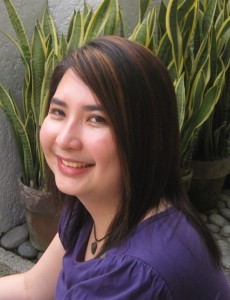 Anna Patricio is a lover of ancient history, with a particular interest in Egypt, Israel, Greece, and Rome. She is also intrigued by the Ancient Near East; she has not delved too much into it but hopes to one day.
Anna Patricio is a lover of ancient history, with a particular interest in Egypt, Israel, Greece, and Rome. She is also intrigued by the Ancient Near East; she has not delved too much into it but hopes to one day.
She undertook formal studies in Ancient History at Macquarie University. She focused mostly on Egyptology and Jewish-Christian Studies, alongside a couple of Greco-Roman units, and one on Archaeology. Though she knew there were very limited job openings for ancient history graduates, she pursued her degree anyway as it was something she had always been passionate about.
Then, about a year after her graduation, the idea to tackle historical fiction appeared in her head, and she began happily pounding away on her laptop. Asenath is her first novel.
1. Welcome to the blog. Can you tell us a little about yourself?
I am the debut author of a quasi-recent historical novel entitled Asenath, which is about the little-known wife of Joseph (of the multi-coloured coat). I have always been an enthusiast of the Joseph narrative, and later on I became curious about his wife. When I looked her up, I found hardly anything on her. I was then inspired to imagine what she might have been like.
I am an ancient history lover, and this factor made writing Asenath doubly enjoyable for me. I used to dislike history until my teens, when I had a brilliant teacher who was more like a storyteller and made history come alive. She did not make us memorise anything either, as is typical of many history teachers.
I love Egypt, Israel, Greece and Rome. A couple of years ago, I was blessed to be able to travel to the Middle East – Egypt, Israel and Jordan. I was only in Egypt briefly, though, as the focus of the said trip was Israel. I do hope I can return to Egypt one day.
2. What made you want to become a writer?
I suppose you could say that my interest in the Joseph story precipitated my writing life. I had read several historical fiction retellings of Joseph, but none of them gave much emphasis to Asenath. I then thought it might be interesting to write about her, especially since practically no one knew about her.
Before that. though, I was interested in the idea of writing, but did not know what to write about. That is to say, I didn’t know if I wanted to write short stories, poems, novels, or even the whole package. For that matter, I never even thought I would write a novel.
When I was a student, I always received good feedback on my writing assignments. And that was encouraging. But I still didn’t know what to write about.
The idea for the Asenath novel came to me one day, out of the blue. And I thought, “This should be fun!”
3. Who are your favourite writers?
A lot. But the ones that immediately come to mind are Wilbur Smith, Pauline Gedge, and Arthur Golden.
I love Smith’s and Gedge’s Egyptian novels. They truly bring the ancient world to life. Smith’s River God was the very first historical novel I read.
I also adore Arthur Golden’s Memoirs of a Geisha. It is one of my all-time favourite novels. In the past, I have convinced several people to read it, and they were all surprised at how much they ended up enjoying it.
I love those Cinderella-type stories, plus I love Golden’s style of writing – especially the way he describes the titular character’s emotions. Chiyo / Sayuri is so innocent and long-suffering. I know there’s a movie adaptation of that book, but the novel is so much better.
4. What’s the most rewarding element of writing for you?
Well obviously, when I was able to land a publishing deal! That, and also being able to reach out to some readers.
(Not everyone has liked my book though, but that is fine because that is their opinion, and it is expected.)
One reader told me that the last pages moved her to tears. That comment made my day.
5. At what point did you think, ‘I’ve done it – I’ve become a writer’?
I suppose after I finished the first draft of Asenath. It was still far from publishability, but it was massive.
Additionally, my beta readers told me the story was good. I then looked to the draft as the first step of a thousand steps – to use a cliché.
6. Can you share a little about your writing process?
It’s very spontaneous. Basically, what I need is a quiet, solitary room. I once tried writing in an airport but it did not work. There were too many distractions – noise, people moving about, etc.
For some reason, I write better at night than in the daytime. I guess I’m more of a “night person.”
7. What’s your most recent book about?
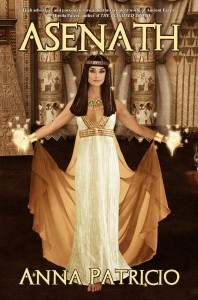 Well, seeing as I already spoke of the titular character earlier, here is the book blurb, which should give you an idea of the plot:
Well, seeing as I already spoke of the titular character earlier, here is the book blurb, which should give you an idea of the plot:
In a humble fishing village on the shores of the Nile lives Asenath, a fisherman’s daughter who has everything she could want. Until her perfect world is shattered.
When a warring jungle tribe ransacks the village and kidnaps her, separating her from her parents, she is forced to live as a slave. And she begins a journey that will culminate in the meeting of a handsome and kind steward named Joseph.
Like her, Joseph was taken away from his home, and it is in him that Asenath comes to find solace…and love. But just as they are beginning to form a bond, Joseph is betrayed by his master’s wife and thrown into prison.
Is Asenath doomed to a lifetime of losing everything and everyone she loves?
8. When you’re not writing, what do you most like to do?
Read, do some amateur photography, listen to music (I especially like classical and the music of Loreena McKennitt), watch TV and movies, and spend time with my new dachshund puppy.
9. What’s next in your writing career?
Another Egyptian novel, which still takes place in Ancient Egypt, but hundreds of years after Asenath. This one looks like it will be more of a family drama than a romance. I am hard at work on it right now – some months ago, I returned to the library to do research on it.
Connect with Anna online
Blog: http://www.annapatricio.blogspot.com
Facebook: http://www.facebook.com/annapatricio.asenath
Twitter: http://twitter.com/annapatricio
Buy the book
Amazon – http://www.amazon.com/Asenath-Anna-Patricio/dp/1926997263
(Available also from Amazon international sites.)
Barnes & Noble – http://www.barnesandnoble.com/w/asenath-anna-patricio/1033320057
The Book Depository – http://www.bookdepository.com/Asenath-Anna-Patricio/9781926997261
Abbey’s Bookshop (For those in Sydney, Australia, it’s available on the shelf!) – http://www.abbeys.com.au/abbeys/home.do
March 22, 2013
Book review: The Ambassador’s Daughter by Pam Jenoff
From the blurb:
Paris, 1919.The world’s leaders have gathered to rebuild from the ashes of the Great War. But for one woman, the City of Light harbors dark secrets and dangerous liaisons, for which many could pay dearly.
Brought to the peace conference by her father, a German diplomat, Margot Rosenthal initially resents being trapped in the congested French capital, where she is still looked upon as the enemy. But as she contemplates returning to Berlin and a life with Stefan, the wounded fiancé she hardly knows anymore, she decides that being in Paris is not so bad after all.
Bored and torn between duty and the desire to be free, Margot strikes up unlikely alliances: with Krysia, an accomplished musician with radical acquaintances and a secret to protect; and with Georg, the handsome, damaged naval officer who gives Margot a job—and also a reason to question everything she thought she knew about where her true loyalties should lie.
Against the backdrop of one of the most significant events of the century, a delicate web of lies obscures the line between the casualties of war and of the heart, making trust a luxury that no one can afford.
I really enjoyed this book, for several elements:
The setting: Wonderful! I love France, of course, and the author sets the scene so well. For example:
In contrast to Paris or Versailles, Reims is a ghost town. Ours is the only motorcar on the narrow cobblestone street, which is deserted, save for a cart pulled by a sorry, malnourished mare. From the sidewalk, pedestrians eye us with interest. Here one can see the closeness of the war. Buildings the entire length of the street were destroyed by the bombs, and only the front walls remains standing, gaping craters behind the facades, which seem ready to topple at any second. The smell of gunpowder hangs in the air as though the destruction took place hours, and not months or years, ago.
The history: Meticulously researched. I was moved as I read, so strong was the resonance of the pain and tentative hope in the immediate aftermath of World War I. I found the exploration of the role of women especially interesting:
Bodies fill the makeshift dance floor in the center of the great room, moving in strange new ways to the lively jazz music that blares from the gramophone. Two women dance as though one was a man, pressed close together. A strange scent, something strong like burning flowers, mixes with the faint odor of sweat in the air. There is a kind of desperation to the revelry, especially among the women. It is more than just the wiping away of cobwebs and sorrow of a world struggling to live again. The chance for a normal life with a husband and child has been denied to so many, a generation of would-be suitors gone to the trenches.
I found myself sad, though, as I read, because of course you know what is to come for France and Germany and the other countries that would be pulled into the next war all too soon. The book really made me consider the history of that time, and what it must have been like to live then, and there – and how it would have affected le grand romance.
The thought that went into the writing: The book is intelligent, and thought-provoking. There is much to consider in terms of the implications of the Great War, and I like the fact that the author tells the story from more than one perspective; we see the war and its aftermath from all sides. The character of Georg , a German, is especially interesting, as we see a soldier from the defeated side work to rebuild his country’s defences.
The characters: Interesting, and real – even when that means not being idealistic or perfect, but having flaws and making mistakes. I liked Margot, the protagonist; though I did sometimes wish she was a little more passionate, I think she is realistic for a very young woman of the era. I loved Krysia, the Polish musician who becomes Margot’s friend, and Georg, her love interest. As for Stefan, the man whom Margot has left behind, his character broke my heart…
Overall, I feel the historical elements of the book come forth more strongly than the romance; but that is not to say that there isn’t a compelling romance interwoven through the plot. For writing style and setting alone, I’d give the book five stars. The only reason I’ve settled on four is because of a sadness underlying the ending that I found difficult to shake off (I won’t tell you; it will spoil the book). However, don’t let that put you off what is a superb book. Atmospheric, poignant, moving, expertly crafted – The Ambassador’s Daughter is a book I’ll be keeping on my shelf to re-read.
The Ambassador’s Daughter is available now from Amazon; click on the book cover below to visit the store.
March 20, 2013
La Semaine des Voiles
 La Semaine des Voiles is a great event in St Tropez. We watch a parade of the most beautiful sailboats from our balcony.
La Semaine des Voiles is a great event in St Tropez. We watch a parade of the most beautiful sailboats from our balcony.
March 19, 2013
Book review: The Cinderella Substitute by Nell Dixon
From the blurb:
In the two years since the tragic car crash that killed his fiancée, Nathanial (Nate) Mayer has successfully avoided another relationship. His family and especially his twin sister Nathalie are worried. Jennifer (Jenni) Blake is Nate’s personal assistant. Hired after the accident, she has her own problems to deal with, including the deaths of her adoptive parents and the debts incurred by their nursing care. But those difficulties pale into insignificance when Jenni finally traces her birth mother…
This book is a modern-day love story about two very troubled people – Nate and Jenni. Told from both their perspectives, you really understand where both are coming from, how both their pasts continue to affect their lives in the present and how neither can admit their true feelings. Their professional roles as boss and personal assistant are the masks behind which they both hide, self-conscious of their separate personal situations – yet their caring attitudes towards each other show through. Both are troubled by their feelings for the other, not wanting to surrender to the possibility of rejection.
She had always been aware of Nate attractiveness, but because of his past – and her own – she had never allowed it to impact on her. She couldn’t change her mind now.
It had to be Jenni, but she deserved love, deserved a man who could give her his whole heart. Not someone like him. A man whose heart was buried with another woman in a cold and lonely grave. Nate had forfeited all rights to fall in love again the night he had failed Cerys.
The story follows the pair as they work together on a work project and the Christmas party, and as Jenni makes first contact with her birth mother. Nate is a workaholic and a true gentleman. He is protective of Jenni and tries to look after her during this tough time. Jenni is embarrassed by her financial situation and lacking in confidence regarding her appearance. But determined to make the right impression for Nate’s business clients, she undergoes a makeover/transition. As they spend more time together and find out more about each other, they kiss, but Nate’s reaction is not what Jenni was hoping for:
He had looked at her after they’d kissed as if he hadn’t known who she was. He had recoiled from her so fast it had been embarrassing. She had to face the truth – no matter how much she might try to reach it, Cerys still held Nate’s heart.
This book soon becomes a real page turner as you try to find out why Nate is still so caught up in regret about the tragic death of his fiancé two years ago, why Jenni lives in such a rundown area, why her birth mother is making excuses not to meet and, most importantly, whether these two will ever acknowledge their feelings and get together. It is a very sweet book, full of tender moments and intrigue. A lovely, heartwarming read.
The Cinderella Substitute is available now from Amazon; click on the book cover below to visit the store.
March 18, 2013
Ten must-visit websites for romantics
The internet – where would we be without it? Shopping, networking, banking, researching, arranging travel, catching up with friends and family: it’s an inherent part of daily life. And for romantics, there’s rich fodder for the imagination. Here are ten websites I recommend to fellow romantics. If you have suggestions, please do comment and add them.
Goodreads – the place to discover your next romantic read, and lots of forums in which to discuss the genre.
What Makes True Love – a site dedicated to romance for dreamy browsing. It’s run by Tiffany & Co, so you can also take a peek at some of the world’s most romantic jewellery; a site to leave open on the browser for the other half to see (hint, hint).
Seduction Meals – recipes for romantic meals for two.
Romantic Scenery on Pinterest – I love the settings on this board. Stunning!
Murad Osmann’s Instagram page – Murad took photos of his girlfriend leading him around the world that captured imaginations worldwide ; well worth a look.
Expedia.com – or any other travel website. Nothing is more romantic than sharing a moment in a faraway land.
Art.com – because art is the very epitome of romance, and here you can browse so many artworks that inspire.
The Quote Garden – for beautiful quotes on love, romance and passion.
YouTube – for videos of everything from romantic movie clips and songs to romantic marriage proposal flash mobs.
Hannah Fielding – well, I have to include my own romance site, of course! And on Twitter you’ll find me tweeting the most romantic quotations daily.
March 17, 2013
Unwind with a classic Kenyan cocktail (or mocktail)
The Dawa cocktail has become a classic drink in Kenya, setting of my novel Burning Embers. ‘Dawa’ means medicine or magic potion in Swahili; the drink is said to soothe all ills. Kenyans use a traditional Dawa stick to stir the cocktail – a wooden stick, sometimes carved or painted or decorated with beads, but you can use any stick for stirring.
The drink originated in Brazil, and was not a favourite back in 1970 when Burning Embers is set, otherwise I would have let Coral sip one at Rafe’s nightclub, The Golden Fish, while watching sensual dances and relaxing in the cool evening sea breeze.
It’s a very simple cocktail to make, and I’ve come up with a non-alcoholic version for those who prefer to give the vodka a miss. Sip on a sunny evening and dream of summer to come!
Ingredients:
1 measure vodka (or tonic water/apple juice)
Ice (crushed)
1 lime wedge (quarter)
1 tablespoon brown sugar
1 tablespoon honey
1. Place the lime wedge in a strong tumbler and crush with a pestle until the lime is juiced.
2. Add the sugar, ice and the vodka.
3. Twist your Dawa stick in honey, then use it to stir up the drink. The more you stir, the sweeter it gets.
Enjoy!

